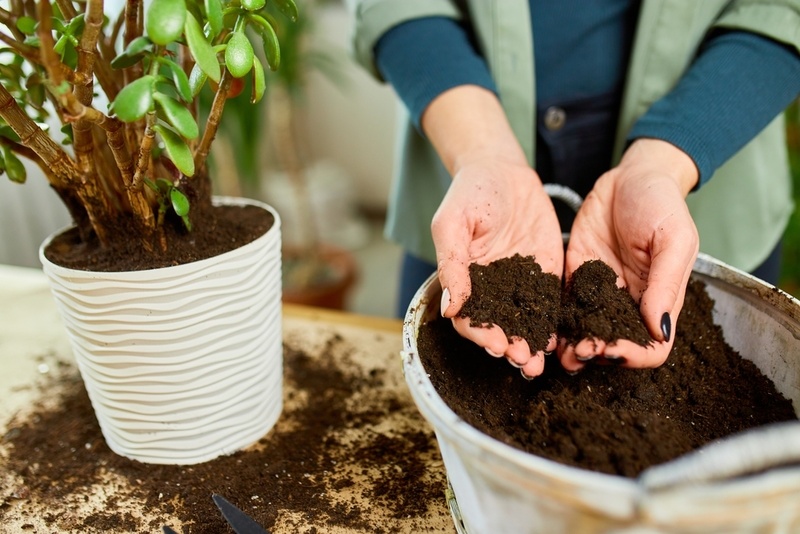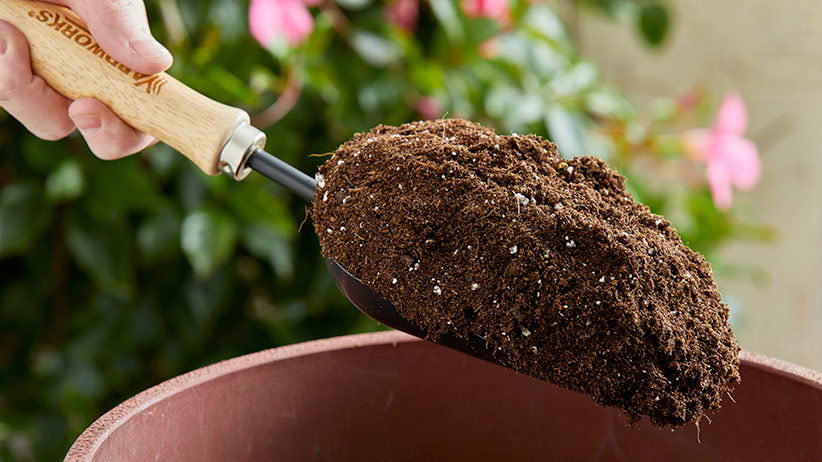How to Choose the Right Soil for Indoor Plants: A Comprehensive Guide

Imagine you're a plant parent, eager to nurture your green companions. You've picked the perfect planter, found the ideal spot by the window, but there's one crucial decision left: choosing the right soil. Just like Goldilocks, you need soil that's not too much, not too little, but just right. So, how do you pick the perfect indoor plant soil? Let's dive in!
Understanding the Basics of Indoor Plant Soil
Before we delve into the specifics, let's understand what makes a good potting mix. Indoor plant soil is not just dirt; it's a blend of ingredients that cater to your plant's needs. Think of it as a balanced diet for your plants, providing essential nutrients, drainage, and aeration.
The Importance of Soil for Plant Growth
Soil is the lifeline of your plants. It anchors them, supplies water and nutrients, and facilitates air exchange. The right soil can boost your plant's growth, while the wrong one can stunt it or even cause root rot.
Key Factors to Consider When Choosing Indoor Plant Soil
Drainage: The Make-or-Break Factor

Good drainage is non-negotiable. Imagine sitting in a puddle all day—not pleasant, right? It's the same for plants. Waterlogged soil can lead to root rot, which is often fatal for plants. Your potting mix should allow water to flow through easily, keeping the roots moist but not soggy.
Nutrients: Food for Your Plants
Plants need nutrients to grow, and soil is their primary source. While some plants are heavy feeders, others are content with fewer nutrients. Knowing your plant's needs will help you choose the right soil.
Soil Types: Different Strokes for Different Folks
Different plants thrive in different soil types. Here are some common types of indoor plant soil:
- All-Purpose Potting Mix: This is the jack-of-all-trades, suitable for most houseplants. It's usually a blend of peat moss, perlite, and vermiculite.
- Cactus and Succulent Mix: This fast-draining mix is perfect for desert plants. It often contains ingredients like sand, perlite, and small amounts of organic matter.
- Orchid Mix: Orchids need excellent aeration and drainage. Orchid mix usually consists of bark, sphagnum moss, and perlite.
How to Choose the Right Soil for Your Indoor Plants
Know Your Plant
Before you pick a soil, understand your plant's needs. Does it prefer dry or moist conditions? Is it a heavy feeder? Does it need specific pH levels? The more you know about your plant, the better you can cater to its needs.
Check the Ingredients
Always check the ingredients list on the potting mix bag. Here are some common ingredients and their roles:
- Peat Moss: Retains water and adds acidity.
- Perlite: Improves drainage and aeration.
- Vermiculite: Retains water and nutrients.
- Bark: Adds aeration and drainage, ideal for orchids.
- Compost: Adds nutrients and improves soil structure.
Test the Soil
Don't be afraid to get your hands dirty. Touch and feel the soil. Does it crumble easily? Does it feel gritty or smooth? This can give you a good idea of its texture and drainage capabilities.
DIY Potting Mix: Tailoring Soil to Your Plant's Needs
If you can't find the perfect potting mix, why not make your own? Here's a simple recipe to get you started:
- Basic Houseplant Mix: Mix equal parts peat moss, perlite, and compost. This mix suits most indoor plants, providing a balance of drainage, aeration, and nutrients.

Common Mistakes to Avoid
- Using Garden Soil: Garden soil is too heavy and compact for indoor plants. It can lead to poor drainage and aeration, stunting your plant's growth.
- Ignoring pH Levels: Some plants prefer acidic or alkaline soil. Using the wrong pH can hinder your plant's ability to absorb nutrients.
- Not Considering Your Plant's Needs: Not all plants are the same. What works for one might not work for another. Always research your plant's specific needs.
Conclusion: The Right Soil Makes All the Difference
Choosing the right soil is a critical step in caring for your indoor plants. It's not just about picking up any bag of potting mix; it's about understanding your plant's needs and tailoring the soil to meet them. Remember, the right soil can boost your plant's growth, keep it healthy, and even enhance its beauty. So, are you ready to give your plants the best foundation for growth? Your green companions are counting on you!
FAQs
Can I use garden soil for my indoor plants? No, garden soil is too heavy and compact for indoor plants. It can lead to poor drainage and aeration, hindering your plant's growth.
How often should I replace the soil in my indoor plant pots? It depends on the plant and the soil quality. Generally, it's a good idea to repot your plants every 1-2 years, replacing the old soil with fresh potting mix.
What is the best soil for succulents? Succulents prefer well-draining soil. A cactus and succulent mix, which usually contains sand, perlite, and small amounts of organic matter, is ideal.
How can I improve the drainage of my potting mix? You can improve drainage by adding ingredients like perlite, pumice, or sand to your potting mix. These materials help water flow through the soil more easily.
What is the ideal pH for indoor plant soil? The ideal pH depends on the plant. Most indoor plants prefer slightly acidic soil with a pH between 6.0 and 7.0. However, some plants prefer more acidic or alkaline soil. Always research your plant's specific needs.
For more information on indoor plant care, check out these resources:
0 Response to "How to Choose the Right Soil for Indoor Plants: A Comprehensive Guide"
Post a Comment